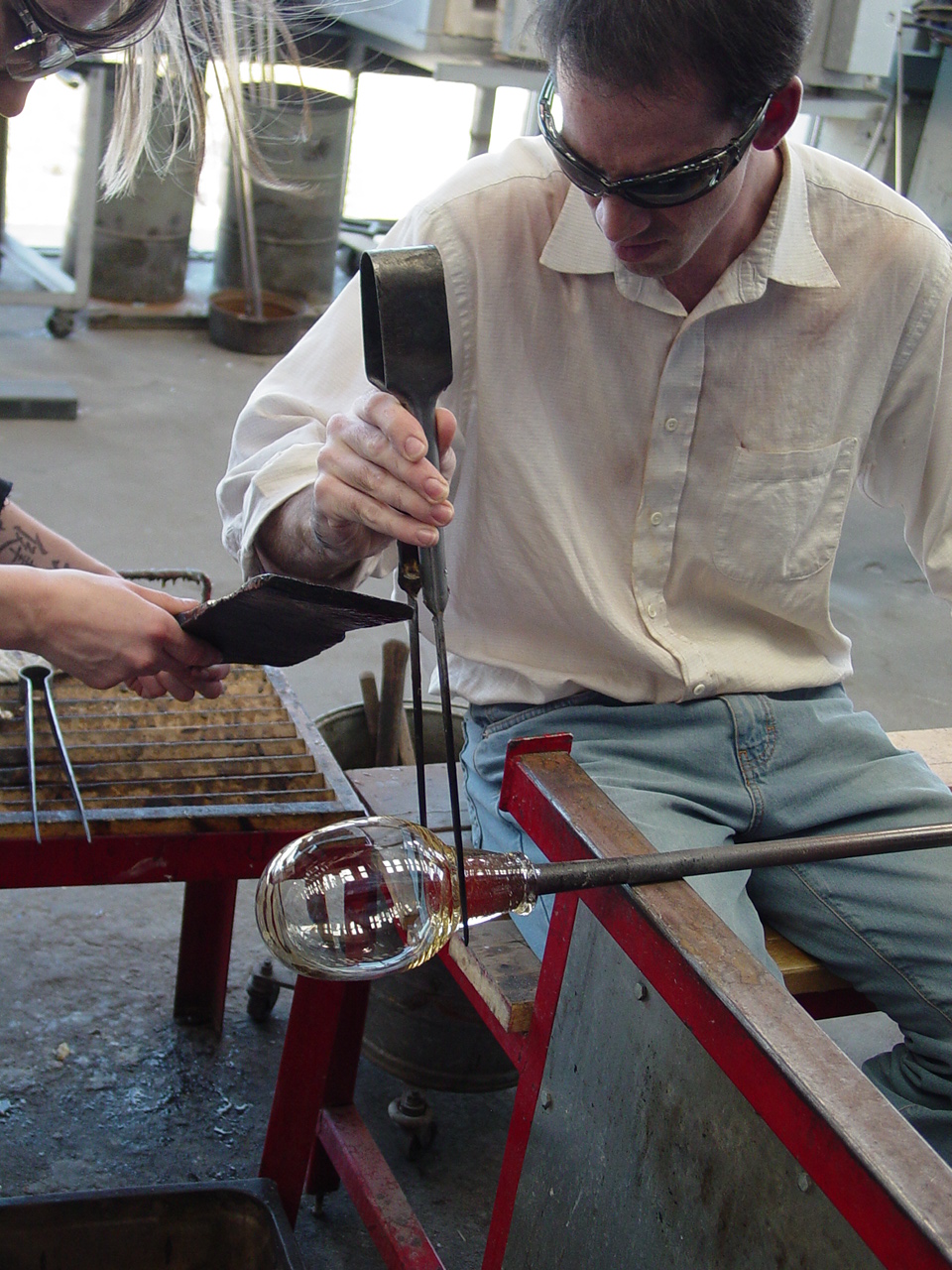Glasswork
Glass is a material that has always captivated me: it is the only solid which is a liquid! Adding my fascination for Venice and its many trades, of which glass making is a world-renowned highlight, there was no doubt that I wanted to find out more about its properties than what I had found in books. I was eager to attend a hands-on course, during which I could learn how to tame that golden, glowing liquid. Finally, my last year at the Cleveland Institute of Art and Design, I was able to register for the class.

There are numerous ways to work glass, even once it has been given its original shape through heat, and I was very interested in the cold work as well. Daum and Lalique are great inspirations of mine and I personally find that once glass is sanded it becomes softer, like velvet, more inviting to the touch than its glacial counterpart.
I made several pieces during that semester, each with a different method of creating or finishing. This is my method of working to this day: anything that might seem a mistake, anything that keeps me from attaining what my original goal was, is stored in my mind as a potential future reference for an effect I might want to create.

One of my favorite pieces started in intent as a vase. I had made the upper part too thin and as it neared the oven to be heated, it started separating, opening up as a flower would blossom. That gave me the idea to exaggerate that shape and make a butterfly orchid out of it. I cut the “vase” where it had begun to separate and turned it rapidly to give it droplet shapes at the ends and turned some more to stretch them and give them almost a semblance of motion. Once beadblasted, its true beauty came out with added softness, and we use it only as a sculpture.

This frame of mind was introduced to me by one of my design teachers, who encouraged us to not hide “defects” in our work, but rather exaggerate and feature them, or even change the piece from its original purpose. I use this wisdom in my work and my life as there is much to be learned from our so-called mistakes. Years later these can provide the solution to a seemingly unrelated problem.
